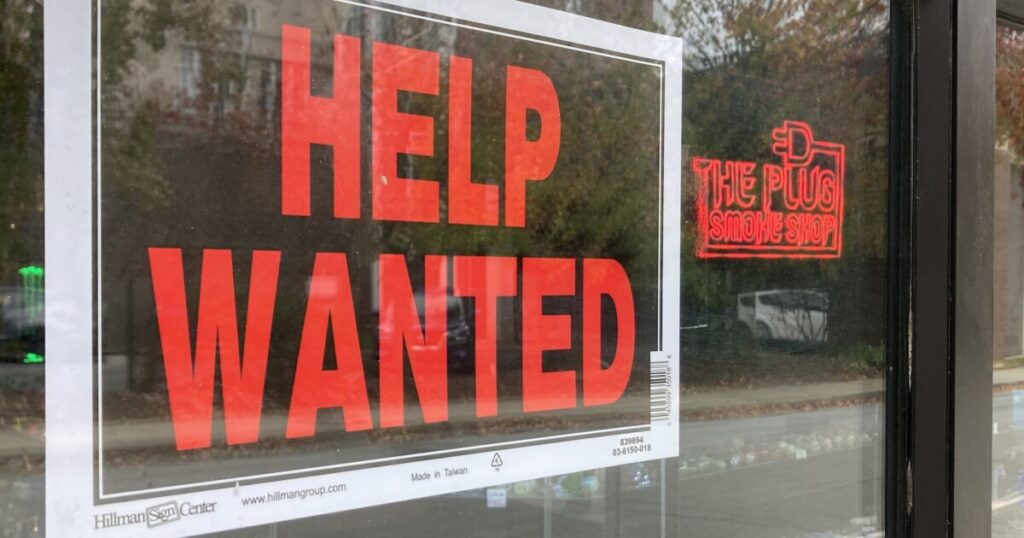The impact of Hurricane Helene has been felt significantly across the local economy, with Buncombe County experiencing a dramatic rise in unemployment rates. After enjoying the lowest unemployment rate in North Carolina, the county saw its rate soar to the highest in the state by October.
This week, a glimmer of relief was offered by the North Carolina Department of Commerce, which extended the deadline to apply for disaster unemployment assistance to January 7.
Despite an 8.8% unemployment rate, which is less severe than during the COVID-19 pandemic, the path to recovery is proving to be more complex, according to experts.
Vicki Meath, who leads the Asheville-based nonprofit Just Economics, shared insights into the daily challenges faced by Buncombe County residents.
“I know people who have gotten denied disaster unemployment,” Meath revealed in a recent interview. “I know people whose FEMA applications — even for the $750 — were denied. I know people whose out-of-state landlord applied for the $750 and didn’t offer the tenant actually living there the actual amount, and there’s only one [application allowed] per household.”
The delay in receiving aid has further compounded the situation, leading to dire consequences for many.
“I know people that waited the entire month of October for their disaster unemployment application to go through and were getting eviction notices come November 1st,” Meath added.
Challenges extend beyond statistics, as some residents lost crucial documents in the storm or are dealing with the psychological aftermath of the disaster.
“Trauma impacts your brain’s ability to think and to do things correctly,” Meath noted. “So, we have a whole bunch of people that are working in trauma-brain trying to fill out applications for a whole number of things and then also trying to determine, ‘What do I eat today?’ or ‘How do I keep my kids warm at night?’”
A ‘multi-year recovery’
The state’s decision to extend the deadline for disaster unemployment assistance offers some hope for those affected by Helene. Individuals from 39 counties and the Qualla Boundary can now apply until January 7, and those approved can receive up to $600 a week for up to 26 weeks.
In October, nearly 18,000 people were unemployed in the Asheville metro area, which includes Buncombe, Henderson, Haywood, and Madison counties, according to state figures.
This represents a 7.3% unemployment rate, over twice the rate before Hurricane Helene struck.
Clark Duncan, who directs the Economic Development Coalition for Asheville-Buncombe County, highlighted the stark contrast with national trends in October.
“For context, that represents the single largest year-over-year growth in unemployment of all 389 metro areas in the United States,” Duncan stated. “Technically, we were tied with Kokomo, Indiana. I don’t know what happened in Kokomo. But yeah, that’s not a title you aspire to.”
Preliminary data indicates that half of the job losses in October were in Asheville’s leisure and hospitality sector.
Duncan remarked on the unexpected nature of these losses, given the area’s previously low unemployment rates.
“Leading up into the pandemic, we had the lowest unemployment in the state month-over-month, uninterrupted, for five years,” he said. “And we’ve held that ranking for most of the post-pandemic period, as well. And that has a lot to do with the reach of our labor shed and the mix of employment here in the area.”
The region has faced economic challenges before.
Following the Great Recession, it took almost seven years for the Asheville metro area to recover lost jobs. The aftermath of the 2020 pandemic required nearly three years for the labor market to rebound.
“Now, I think it’s important to say those were actually also much larger job losses compared to what we know to be true today,” Duncan stated. “But in the same breath, we know it’s early, right? We have one month’s worth of data. We don’t know yet if we’ve hit the height of our unemployment numbers and are starting to recover. So, that’s a question that time will tell.”
Duncan anticipates a prolonged recovery period, spanning not just months, but years.
Rebuilding housing is top of mind
Thus far, the state has disbursed nearly $38 million in disaster-related unemployment benefits for over 28,000 claims.
About half of these claims originated from Buncombe County, according to Nathan Ramsey, who leads the Land of Sky Regional Council, a regional planning body.
“That’s partly because the Asheville metro has a large percentage of the population in the counties affected by Hurricane Helene,” Ramsey explained. “And also, the challenges with restoring water — so it wasn’t only businesses that had flood damage or property damage due to the storm.”
Helene’s impact was not limited to disrupting livelihoods; it also destroyed homes in numerous cases.
Ramsey expressed concerns over housing restoration and supporting small businesses, noting these as top priorities.
“Disaster experts have shared with me that oftentimes the most challenging part of a disaster is not the initial response. … The real challenge is going to be the next year,” he commented.
Unlike the global pandemic, Helene is a localized disaster, which might prompt some residents to relocate to unaffected regions.
“As a community, that’s the thing that should scare us, because if we lose our workforce, then that’s going to hurt all of us long term,” Ramsey emphasized. “So, we need to do everything we can as a community to keep those folks here.”
Further insights into the situation are expected with the North Carolina Department of Commerce’s upcoming release of November unemployment data.
Ramsey noted that his organization recently facilitated two job fairs, attracting over 130 employers and 1,300 job-seekers.
“And I just want people to know, there are jobs available,” he said. “You know, reach out to your local NC Works career center. There’s educational and training assistance available. There’s a lot of support available to help people at this time. And hopefully, in the next month or two, there’ll be even more support as additional resources come to our community.”







